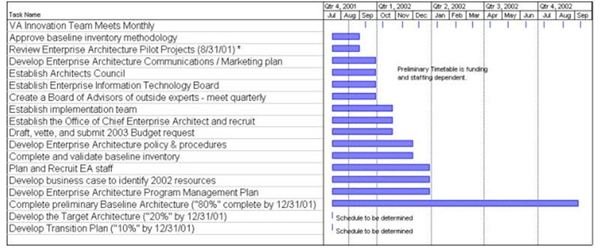Basic Project Plan Format
Introduction
To build their plans, project managers typically either start with a template or create their own new document. For example, free templates containing a project plan format can be downloaded from websites such as the Microsoft Office Templates website or from Bright Hub’s Media Gallery. A title page or cover page usually includes the project title, project manager, approval signatures, and approval date. Project managers then identify the tasks the team needs to complete. Regardless of whether the project manager uses a spreadsheet tool or word processing software, the basic format for a project plan enables the manager to specify a set of activities, task durations and resource assignments.
Activities
The activities section of a basic project plan format includes the task list. The project manager uses this section to list the project’s phases and milestones. Taking the time to map out the scope of the project early in the process saves the team time and energy later on. To build the work breakdown structure, the project manager identifies the major tasks for each phase and indicates any dependencies, such as tasks that cannot start until other tasks get completed. Team members typically report their status on achieving these major tasks. Additionally, risks associated with each task should be noted and reported on. Once the project manager identifies the major tasks, the sub tasks (or daily work) can be defined. Establishing a numbering sequence allows the team to refer to a task quickly, such as “1.1.3 Identify customer requirements.” As the project progresses, the project manager updates the plan to reflect additional activities or removes tasks no longer deemed necessary.
Task Duration
Project managers use the task duration section of a basic project plan format to estimate how long each activity should take to complete. For example, a project manager lists the number of hours required to complete each task. Using these values, the estimates for labor costs can be calculated for the duration of the project. The project manager typically measures duration of the total project in terms of work week days, so a 30-day duration equates to six calendar weeks. As the project progresses, the project manager updates the plan to reflect actual durations.
Resource Assignments
The resource assignments section of a basic project plan format typically lists the people responsible for completing the work. Project managers typically describe the skills and experience associated with each resource. The project plan can also contain detailed information on suppliers or third-party vendors as well. Accurately forecasting the resource requirements for a project enables the project manager to staff the project adequately, ensuring a successful outcome. As the project progresses, the project manager updates the plan to reflect actual names of resources assigned to the project to ensure accountability.
Conclusion
Using a basic project plan format for all projects within an organization helps project managers plan projects consistently. By specifying the same set of information, detailed analysis and reporting can accurately compare and contrast project results. Reliable data regarding task duration, skills, and experience required to complete tasks as well as risks encountered help project managers plan subsequent projects more effectively.
References and Image Credit
- Image Credit: Wikimedia Commons, US Dept. of Veterans Affairs, Preliminary Project Timeline
- “Create a Project plan in 5 easy steps - Project - Microsoft Office.” Office - Microsoft Office. https://office.microsoft.com/en-us/project-help/create-a-project-plan-in-5-easy-steps-HA001136153.aspx (accessed October 27, 2010).
- “Project management - Templates - Microsoft Office.” Office - Microsoft Office. https://office.microsoft.com/en-us/templates/CT001226193.aspx (accessed October 27, 2010).
